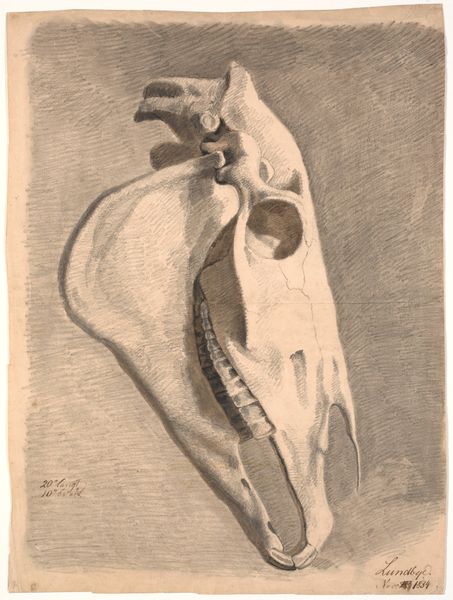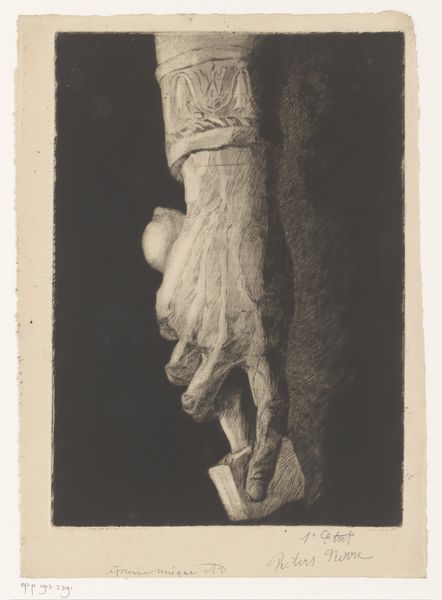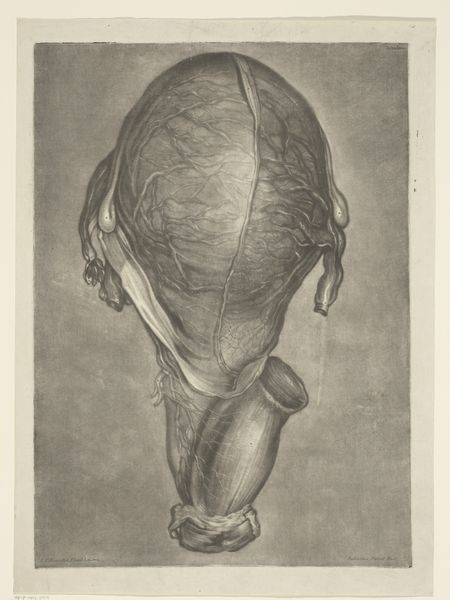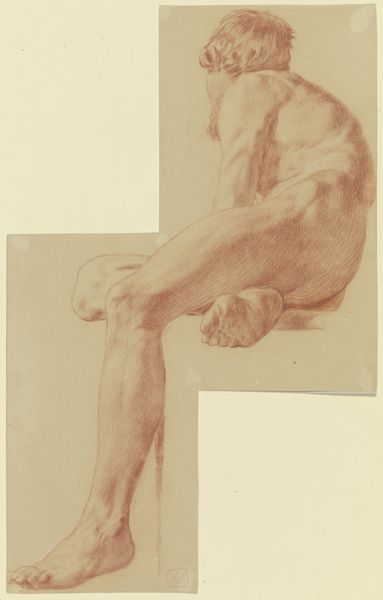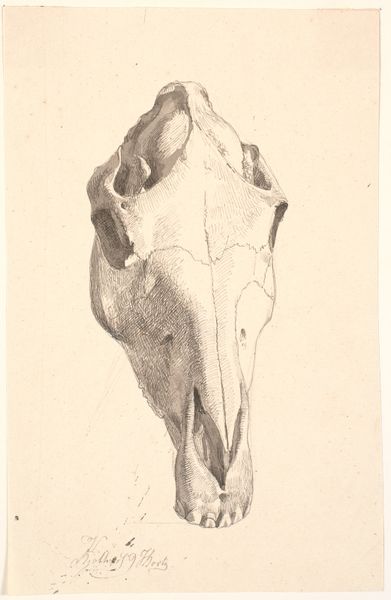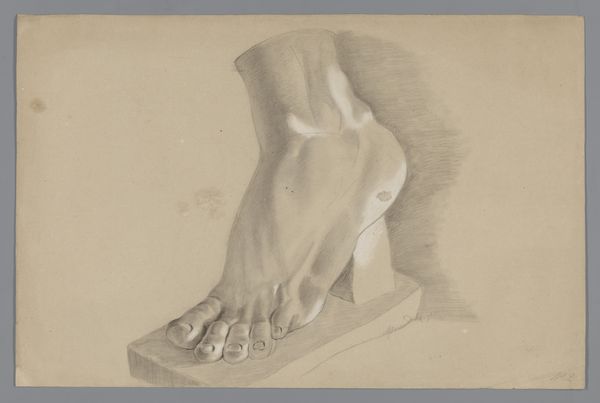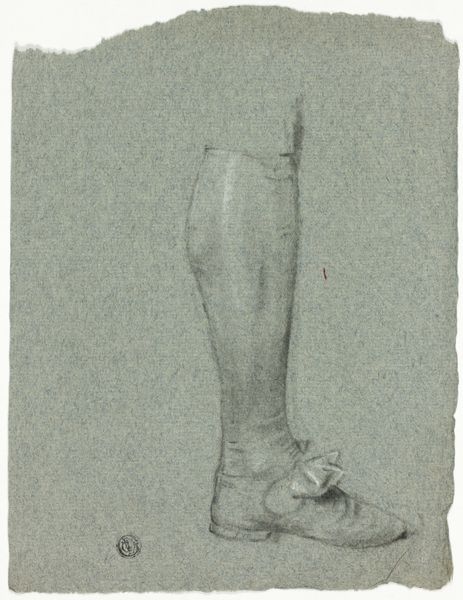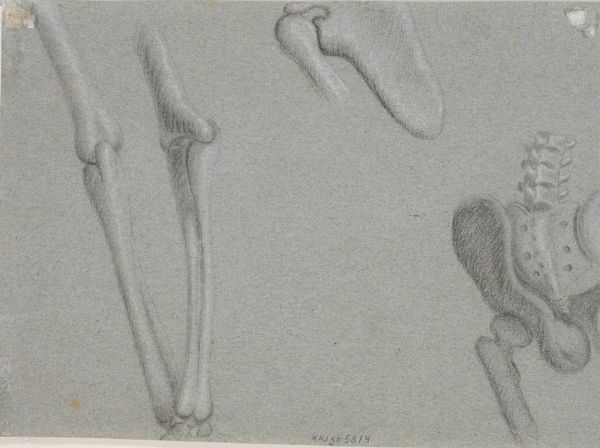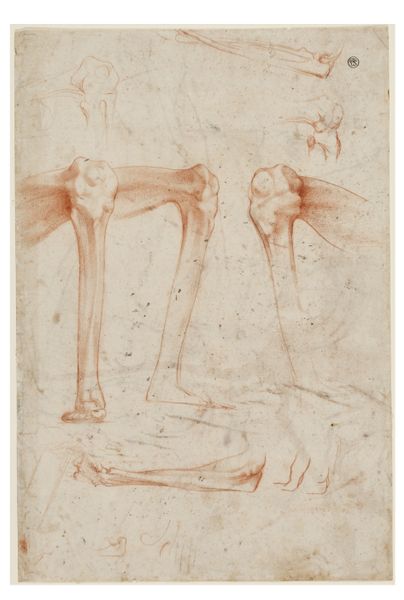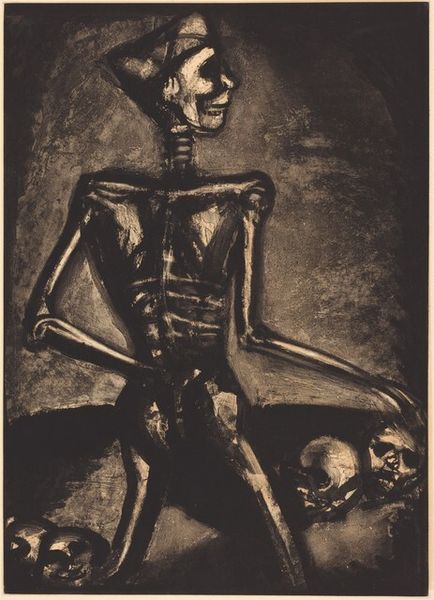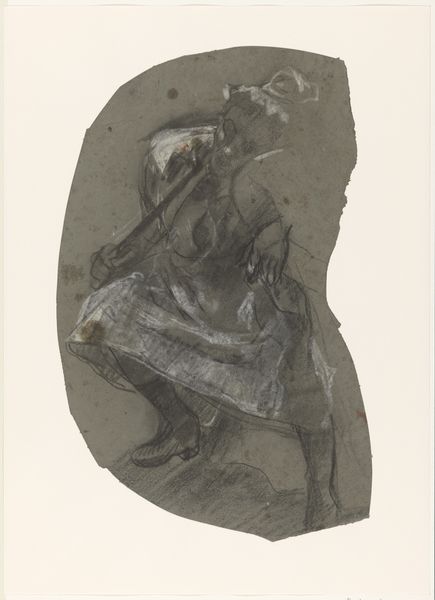
Tegning efter gips. Kopi efter antik (?) skulptur. Ornament med løvehoved og -fod 1872
0:00
0:00
drawing, sculpture
#
drawing
#
sculpture
#
charcoal drawing
#
figuration
#
charcoal art
#
ancient-mediterranean
#
sculpture
#
academic-art
#
realism
Dimensions: 640 mm (height) x 614 mm (width) (bladmaal)
Editor: This drawing, created in 1872 by Joakim Skovgaard, is called "Drawing after plaster. Copy after antique (?) sculpture. Ornament with lion's head and -foot". The shading gives it a striking three-dimensional effect, but it also feels quite… academic. What strikes you about this piece? Curator: Well, what jumps out is its engagement with artistic traditions and the systems through which those traditions were transmitted. Skovgaard is copying a plaster cast, itself a copy of an antique sculpture. What does this tell us about art education in the late 19th century? About the role of the museum and the reproduction industry in shaping artistic vision? Editor: That's fascinating! It’s like a copy of a copy. Was this a common practice for artists at the time? Curator: Absolutely. Drawing from plaster casts was central to academic training. Museums displayed these casts, and artists copied them to master form, anatomy, and classical ideals. Think about the power dynamics at play: which sculptures were chosen for reproduction? Who decided which artists gained access to these resources, and therefore to "correct" artistic principles? Editor: So it’s less about the lion-headed figure itself and more about what it represents in terms of artistic training and institutional power. Curator: Precisely! The act of copying wasn't just technical skill-building; it was a way of internalizing and perpetuating particular cultural values and hierarchies within the art world. Even the creation of drawings like this reinforces specific ideals about artistic skill and the appropriate subjects of art. What kind of statement, then, does that kind of "realistic" drawing, presented in a museum like SMK, really makes about what and who that museum truly caters to? Editor: Wow, I never thought about it that way. Seeing this drawing now, I realize there’s so much more to it than just the image itself. It’s like a window into a whole system of art and power! Curator: Exactly. By looking at art through a historical and institutional lens, we uncover its social and political meaning. Now, where does it prompt you to dig deeper?
Comments
No comments
Be the first to comment and join the conversation on the ultimate creative platform.
